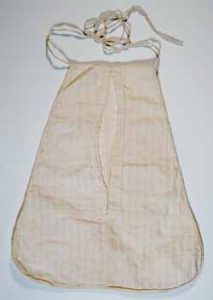Today’s post comes to you from Sally Meyer, current Tufts Museum Studies and History M. A. candidate. To read her other work for the blog, click here.
Education in the United States has become more than the imparting of knowledge onto the country’s young people. In a more globally connected world, school quality and performance has become a national and international issue. Testing to evaluate students’ progress has been a large part of this process, and as a result, a large part of how schools receive funding and support in the most recent decades. The high stakes students and teachers face have created tensions across the educational system. It also presents a difficult question for museum educators to grapple with: where do we fit in?
The first step for museums is to recognize that this barrier exists. Teachers often have a quick response to a new field trip proposal: there is not enough time or money. Some teachers however, believe that “standardized tests and Common Core Standards…are actually the largest constraints.” Often field trips or school programs can only happen after the stress of these exams have passed. Many museums understand this landscape and recognize that to many teachers, field trips are a luxury or a fun outing. Yet while teachers call for reform of testing, museums largely do little to debate the format of the required exams. Instead, many museums have tried to stay relevant by fitting themselves to the mold that the national and state standards present. However, the museums that do not follow this path have found phenomenal success. Museums and cultural institutions that push from the outside and work to prove the validity of what they can best provide that schools cannot are largely more successful and farther ahead of the curve.
To achieve the goal of staying relevant and helpful in the age of increased accountability and standardized testing, museums must be leaders in the field of informal education research. One example is the Isabella Stewart Gardner Museum in Boston, which has worked hard to foster a program that moves with students through their entire high school career. The Gardner has used a basis of theory as well as extensive research to determine what skills their students acquire by coming to the museum and working with the museum educators. The Institute of Contemporary Art’s (ICA) Teen Program is another example of a highly successful program that has become an integral part of the museum’s framework. The teens involved in the program lead tours, make video art, do photography, learn slam poetry, and participate in a wide variety of other subjects. This program is giving teens a place to go after school that provides emotional support as well as supplements the lack in arts education in public schools. The program serves about 8,000 urban youths annually, at little to no cost for the students, and has won numerous awards for its success in fostering future artists, museum visitors, and engaged citizens.
We say over and over that the system must change, the tests must change, and expectations must change before we can have the biggest impact. The status quo however, is a difficult thing to break. Museums cannot just sit idly by waiting for the standards to shift in our favor or the testing format to reflect what children learn in our spaces. Instead, museum educators must become societal and political advocates for change in the American education system, sticking up for students, parents, teachers, and themselves if they hope to make any meaningful or lasting change. Also essential in encouraging change in the system is for museum educators to get involved in the community. Learning about school board meetings and attending them to be knowledgeable enough to speak up could create a shift in thinking. While the future for students, teachers, and museums looks bright, museums that choose to engage in K-12 programming moving forward must continue to keep their eye on their strengths and work to support and advocate for schools, teachers, and students within these frameworks.
